|
How do we not have a thread for home brewing? I can go over some of the basics and show some pictures of my equipment and weíll go from there if anyone is interested. Making beer (greatly simplified) is basically soaking malted barley in water to release the sugars within and then feeding those sugars to yeast, to get them to poop out alcohol. Hops are added for flavor, but weíll get to that. Iíll go through a typical brew day for myself below in a sort of laymanís overlook, and if anyone cares I can expand. Here is a picture of my current set up. Itís fairly ghetto, but I built it all myself for not a lot of money to make sure I was committed to the hobby before buying anything super expensive. Iíve got plans for upgrades to a much nicer system, but thatís for later.  I start my brew day by measuring out how much water I need and treating it with additives to remove some of the stuff the city puts in the water. This water is stored in what is called a Hot Liquor Tank (HLT), this is the keg on the left side of the picture above. It is heated to a specific temperature and kept there via a controller I wired up to a hot water heater element. You can see what that looks like here: 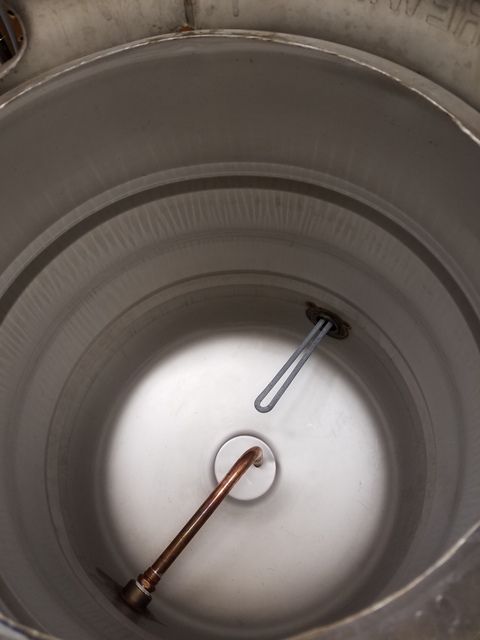 While the water is heating up, I measure out my grains and hops for the specific recipe. Once the malt is measured out, the individual grains must be cracked so that the sugars can leech out during the mash process. I do this with a small grain mill attached to my hand drill. 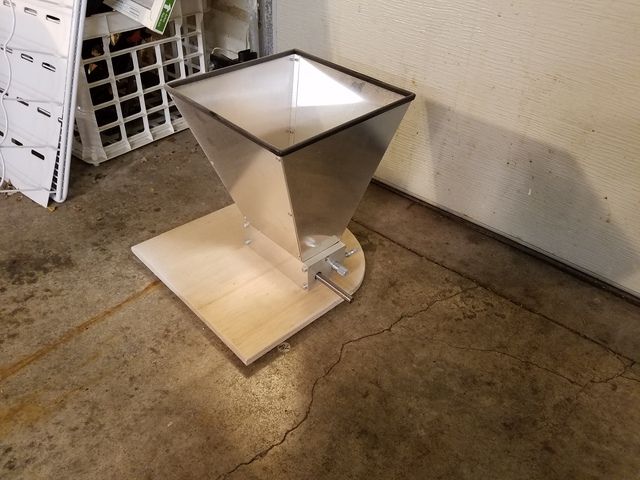 Now that the water is at temperature and the malt is ready, Iím ready to move both over to the Mash Tun. Itís the blue cooler in the first picture. This process is called mashing, basically Iím soaking the grain in water for a period of time to dissolve its contents. This is generally done for 60 Ė 90 minutes depending on what youíre making. At the end of the mash, the wort (the water with dissolved malt sugars) is moved over to the Boil Kettle, but we want to leave all of the grain behind in the Mash Tun as it can impart some icky flavors if itís boiled. In my setup, this is done with a copper manifold. 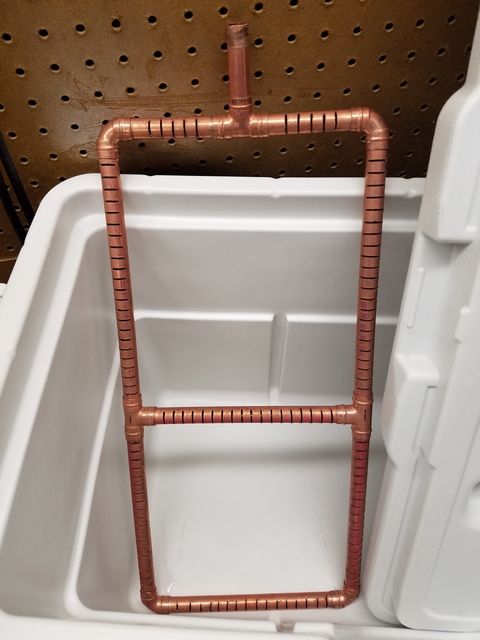 I pump the wort out through the manifold and it filters everything out. The wort is then boiled for a lot of sciencey reasons, can get into that if anyone cares. You can see my Boil Kettle standing on a propane burner on the left. 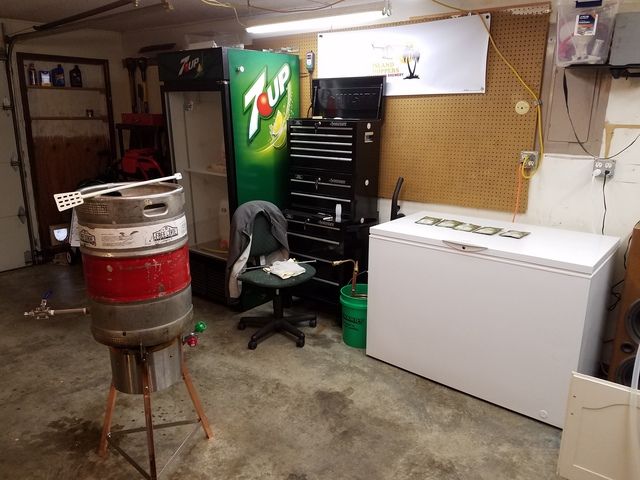 Itís another repurposed keg. 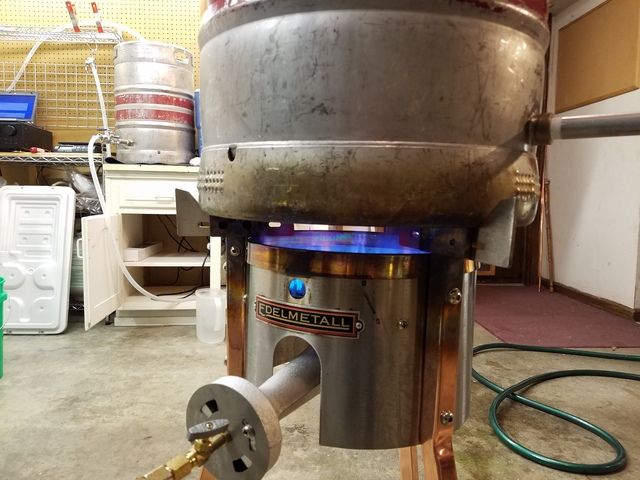 Hops are added at different intervals during the boil, which generally takes 60 Ė 90 minutes depending on the recipe. Once I am done boiling, it is important to get the wort chilled down to yeast pitching temperatures as quickly as possible, again 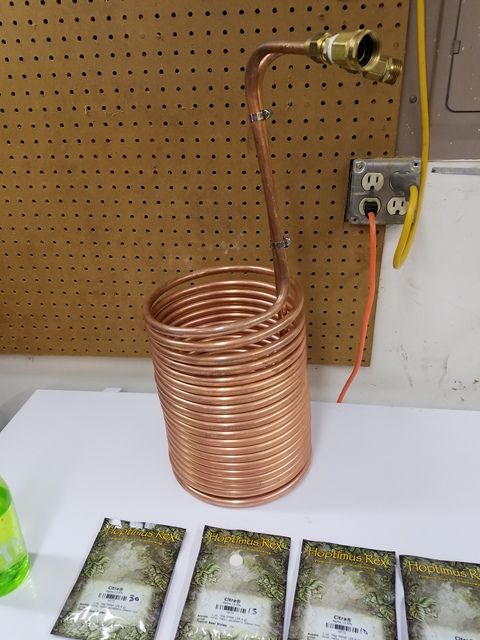 I put it in the boil kettle with the wort and pump ice water through it until Iím happy with the temperature. Once itís cooled, I move the wort to my fermentation vessels and pitch the yeast. At this point Iím basically sitting around waiting for the yeast to do their job, usually about two weeks depending on what Iíve made. Fermentation is an important part of the process and itís quite important to keep the temperature controlled while it happens. Yeasts are really interesting critters, they can impart different flavors depending on the temperature while theyíre working and not all of them are good or wanted for the style of beer you are making. I rewired this fridge to heat up or cool down depending on what I set the temperature to, and then hold it there. 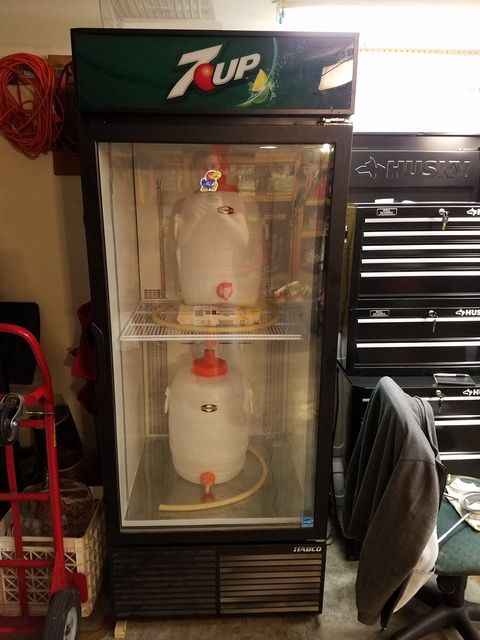 Packaging your finished product can be done a number of ways, but I personally use kegs and then dispense from my kegerator. Lots of people bottle it all up and do it that way though. Anyway, I've rambled on enough for one post. I'm happy to answer any questions or I can just use this as a sort of brew log if people are interested.
|
|
|
|

|
| # ? Apr 25, 2024 17:13 |
|
http://forums.somethingawful.com/showthread.php?threadid=3437782
|
|
|
|
well that makes more sense, was hard to believe there wasn't one. oh well
|
|
|









